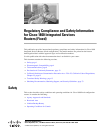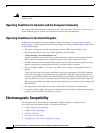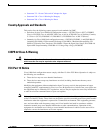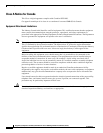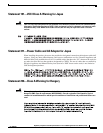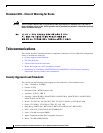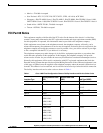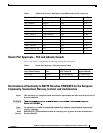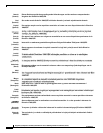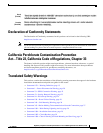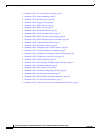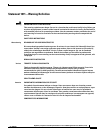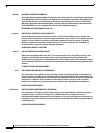
5
Regulatory Compliance and Safety Information for Cisco 1800 Integrated Services Routers (Fixed)
OL-10256-02
Electromagnetic Compatibility
• Statement 371—Power Cable and AC Adapter for Japan
• Statement 256—Class A Warning for Hungary
• Statement 294—Class A Warning for Korea
Country Approvals and Standards
This section lists the following country approvals and standards for EMC:
• Emissions for the Cisco 1800 fixed configuration routers—47CFR15 Class A (FCC); CISPR22
Class A; EN55022 Class A; AS/NZS 3548 Class A (ACA); ICES-003 Class A (Industry Canada);
V-3 Class A (VCCI); EN61000-3-2; EN61000-3-3; EN300386 Class A; KN 22 (Korea)
• Immunity for Cisco 1800 fixed configuration routers—EN55024, EN50082-1, and EN61000-6-1
(including EN 61000-4-2 Electrostatic Discharge; EN 61000-4-3 Radiated Susceptibility; EN
61000-4-4 Electrical Fast Transients; EN 61000-4-5 Power & Signal Line Surges; EN 61000-4-6
Injected RF Swept Immunity; EN61000-4-11 Voltage Dips + Sags); EN300386
CISPR 22 Class A Warning
Warning
This is a class A product. In a domestic environment this product may cause radio interference in
which case the user may be required to take adequate measures.
FCC Part 15 Notice
Cisco 1800 fixed configuration routers comply with Part 15 of the FCC Rules. Operation is subject to
the following two conditions:
1. These devices may not cause harmful interference.
2. These devices must accept any interference received, including interference that may cause
undesired operation.
Modifying the equipment without authorization from Cisco may result in the equipment no longer
complying with FCC requirements for Class A or Class B digital devices. In that event, your right to use
the equipment may be limited by FCC regulations, and you may be required to correct any interference
to radio or television communications at your own expense.
Note This equipment has been tested and found to comply with the limits for a Class A digital device, pursuant
to Part 15 of the FCC Rules. These limits are designed to provide reasonable protection against harmful
interference when the equipment is operated in a commercial environment. This equipment generates,
uses, and can radiate radio frequency energy and, if not installed and used in accordance with the
instruction manual, may cause harmful interference to radio communications. Operation of this
equipment in a residential area is likely to cause harmful interference in which case the user will be
required to correct the interference at his own expense.



